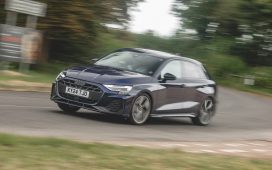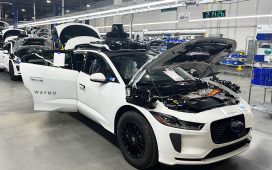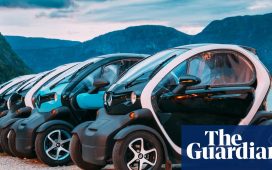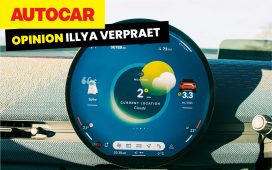Thomas Edison and George Westinghouse were both early pioneers in using electricity in homes and factories. Edison was a proponent of direct current (DC) while Westinghouse favored alternating current (AC). (Let’s not forget about Nikola Tesla, who also contributed to our understanding of electricity.) Fast forward to today, when AC has become the standard for keeping the lights on and operating appliances. Somewhere, George Westinghouse is smiling.
That’s pretty much where things have stood until recently. But now there is a new appliance on the market, one that operates on DC. It’s the electric car. Today when the battery of our electric car gets low, we plug it in at home, where 110 volts of AC current slowly recharge the battery. Some have 220 volt circuits in their garages, which can charge an electric car faster, but its still alternating current.
Batteries store electricity as DC. Electric cars need a device called an onboard charger that converts AC to DC in order to recharge. Most onboard chargers can supply about 11 kW of power. But here’s the thing. Even at 11 kW, charging a depleted battery can take several hours.
To get faster charging, we need DC charging equipment, which bypasses the onboard charger and sends electrons directly to the battery. The lowest DC chargers provide 50 kW of power — five times faster than most onboard chargers can handle — and the most powerful are able to deliver 350 kW of power. DC chargers with even higher power are coming soon. In the US, the National Electric Vehicle Infrastructure act requires each charging location to have at least two 150 kW DC chargers in order to qualify for federal funding.
DC Charging Is The Future
In an opinion piece written for Electrive, free lance journalist Christoph Schwarzer says that DC charging infrastructure is the future — not only along major transportation routes but also at malls and shopping centers and eventually even in our homes.
Schwarzer gives several reasons for his forecast. The first of them is time. AC chargers simply take too long. He foresees people using DC chargers to replenish their batteries while shopping for groceries or doing other things that require less than 30 minutes to complete.
Waiting for a charger is already happening at certain times of the day or certain days of the week, he says. If we rely on AC chargers, wait times will get longer and longer. As more and more electric cars are added to the fleet of cars and trucks on the road, they will need to be charged as quickly as possible. “Otherwise, the system won’t work,” he says.
Lars Walch is the vice president of sales for e-mobility at EnBW, the local utility company for the German state of Baden-Württemberg. As a utility company, it is used to thinking long term for its infrastructure needs. Walch sees fast DC charging as “the best customer experience.”
In the long run, Schwarzer writes, “only charging with direct current offers operators the prospect of profit from their investments in charging parks, transformer stations, foundations and roofs. Walch knows that there is money to be made from charging infrastructure, but that is yet to happen. EnBW has commissioned at least one site (on average) per workday in 2023 – all of them DC.
“When we look at the market, we see that EnBW’s main competitors are either from the car industry (Ionity and Tesla) or from the oil industry (BP’s Aral Pulse and Shell Recharge). Oil companies are clearly preparing for the day when they are sued in some international court for decades of CO2 emissions and need a defense strategy. ” He adds that among the many municipal utilities in Germany, there is a growing realization that public charging can only be profitable if DC chargers are used. “AC is a waste of parking space and time,” he says.
The most crucial element for urban and densely populated areas is opportunity charging at privately owned, publicly accessible DC charging parks. In other words — in the supermarket car park. There is enormous potential here that owners are increasingly tapping into. It is no longer a vision of the future that EV owners will prefer to drive to a shopping center where they can fill up their traction battery as they shop.
Up to this point, everything is clear. Due to the scarcity of space and the upscaling of electromobility, there is no way around the fastest possible DC charging. It has been happening for a long time and will become even more so against the backdrop of the megawatt charging system (MCS) for electric trucks. And if peak loads in the high voltage grid become too expensive, stationary buffer storage systems must be built.
DC Charging At Work
Schwarzer thinks even employers will soon see that DC charging infrastructure is the preferred choice moving forward. “Above a certain size, it is no longer more expensive to rely on DC instead of AC. The principle is called DockChain — a kind of main charger supplies many individual DC points with electricity depending on demand. The system can be flexibly expanded, and it offers the option of fast charging when required.”
Dockchain is a system devised by a team at University College Dublin and Imperial College London. DockChain makes rapid DC charging possible for all parking spaces at little more than the cost of slow AC charging. Charge any car or van quickly when you need it. Charge all your cars or vans cheaply, says Go Eve, the company that is commercializing the DockChain technology. “Imagine a world where you don’t have to think about which parking space has charging because they all do. That’s DockChain,” the company says on its website.
“So it is by no means set in stone that large company car parks have to be equipped with a large number of AC points. It is probably only an interim solution,” Schwarzer writes.
DC Charging For Homes
Schwartzer believes that DC charging will become the norm for electric car drivers at home as well. That may seem counter intuitive, but the reason is the increase in the number of rooftop solar systems and residential storage batteries, all of which operate on DC. By having DC residential chargers as well, all those elements can share electrical power with each other without needing an inverter to convert DC to AC and vice versa. All conversions involve losses, and with electricity flowing back and forth between solar panels, EV batteries, and residential batteries several times a day, those losses will become significant.
Schwartzer says the auto industry would be delighted if it could dispense with onboard AC charging equipment. “It doesn’t matter which continent the manufacturer comes from. If it is possible to do away with a component that costs money, takes up installation space and weighs a lot, the car industry will be thrilled to do so. A typical 11 kW charger now costs less than 200 euros. It adds up if it can be saved millions of times over.”
The Takeaway
Schwartzer recognizes that DC systems are more expensive today but believes that economies of scale will make the cost differential between AC and DC charging narrow over time. “As a result, it is plausible to assume DC only in a scenario with 100 per cent electric vehicles. That could take a very long time, perhaps until 2050. But it is not out of the question.”
If indeed there is a proliferation of DC powered devices — solar panels, residential storage batteries, and electric cars — it makes sense that they should be able to inter-operate without needing endless conversion to AC and back. Somewhere, Thomas Edison is smiling.
Have a tip for CleanTechnica? Want to advertise? Want to suggest a guest for our CleanTech Talk podcast? Contact us here.
Our Latest EVObsession Video
I don’t like paywalls. You don’t like paywalls. Who likes paywalls? Here at CleanTechnica, we implemented a limited paywall for a while, but it always felt wrong — and it was always tough to decide what we should put behind there. In theory, your most exclusive and best content goes behind a paywall. But then fewer people read it!! So, we’ve decided to completely nix paywalls here at CleanTechnica. But…







